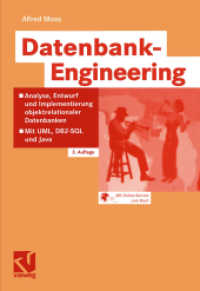- ホーム
- > 洋書
- > 英文書
- > Politics / International Relations
基本説明
Between 1989 and 2004, the EU's conditionaliry for membership transformed Central and East Europe. This book demonstrates how that transformation worked in practice.
Full Description
Between 1989 and 2004, the EU's conditionality for membership transformed Central and East Europe. The EU had enormous potential power over the whole range of domestic politics in the candidate countries. However, the EU was able to use that power at a few key points in the process leading to their accession. The EU's long-term influence worked primarily through soft power and through voluntary rather than coercive means. During the membership preparations, the EU built many different routes of influence into the candidate countries' domestic policy-making through 'Europeanization'. The Central and East Europeans voluntarily took on the Union's norms and methods, guided by the European Commission, in a massive transfer of policies and institutions. However, the EU missed important opportunities to effect change as well. The EU's Transformative Power explores in detail how the EU used its influence to control the movement of people across Europe, through both coercive use of conditionality and voluntary methods of Europeanization.
Contents
Abstract
About the Author
List of Tables
Abbreviations
Acknowldgements
Introduction
Accession Conditionality and its Implications
Europeanization, Negotiations and Influence
Routes of Europeanization and Constraints on EU Influence
The Receiving End: Politics in the Candidate Countries
Free Movement of Persons in the Single Market
Movement of Persons under Schengen
Explaining How EU Influence Worked
Conclusion
Notes
Bibliography
Index








